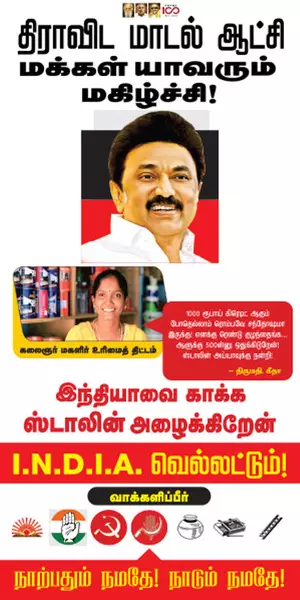Ethanol is health tonic for sugar industry: Roshan Lal Tamak of DCM Shriram
Ethanol blending programme likely to continue even if global crude oil prices fall, since government wants to reduce dependence on imported oil

Blending of ethanol with petrol has saved the Indian sugar industry from the boom-bust cycle that characterised it, owing to government-fixed sugarcane rates that sugar prices did not support. Though sugar prices are high, they are still not viable, and it is revenue from ethanol that is providing a cushion to sugar mills.

Elaborating further, Roshan Lal Tamak said in a Zoom interview with The Federal that he expects the ethanol blending programme to continue even if global crude oil prices fall, since the government wants to reduce dependence on imported oil and also shrink the country’s carbon footprint.

Tamak is Executive Director of DCM Shriram and CEO of its sugar business. The company has four sugar mills in Lakhimpur Kheri and Hardoi districts of Uttar Pradesh. The sugar business, established 25 years ago, has expanded from 22 lakh quintals of cane crushed in 1997-98 to 554 lakh quintals crushed in 2020-21.
Petrol spiked with ethanol
Sugar mills sold ethanol worth ₹18,000 cr to the oil marketing companies last year, which is about a fifth of the value of sugar produced. As of July, petrol was spiked with ethanol to the extent of 10.16 per cent. Demand for ethanol will increase as the government has advanced the target for 20 per cent blending by five years to 2025-26. Mills supplied about 275 cr litres of ethanol last year. They are investing aggressively and are setting up multi-feed distilleries that will use not just sugarcane juice and molasses as feed but also broken rice and other cereals.
Ethanol has thrown a lifeline to the sugar industry, which supports 50 million farmers and about 5 million workers. Exports cannot be depended on, as India is a high-cost producer. Indian exports are viable when global sugar prices are high, or they are subsidised. But subsidisation in the current form will not be allowed from January 2024, the World Trade Organisation has ruled.
Conservation is important
Even as the sugar industry morphs into a producer of green fuel, cane cultivation practices will have to become green. Sugarcane is grown using a lot of water. Though there is abundant water in the Gangetic Plains, it is a resource which farmers must conserve.
Tamak said drip irrigation is ideal as it saves water and fertiliser and ensures higher yield. The company has tied up with drip irrigation equipment suppliers Netafim and Rivulis. It is also emphasising on ratoon management, or the cultivation of sugarcane from the vegetative growth of stubbles after planted cane is harvested. This does not require soil disturbance or investment in seed.
Foliar sprays of fertilisers and insecticides are being encouraged to improve the efficiency of their use. In the company’s cane area of 1.64 lakh ha, foliar spraying has been one with drone and tractor-mounted sprayers on 65,000 ha, Tamak said. Sugarcane trash is being mulched in the entire catchment area of the mills. This prevents evaporation losses and enriches the soil.
No sugarcane waste is being burned. Farmers have dug about 17,000 compost pits. These practices have saved about 700 billion litres of water over the past six years, a number validated by the Indian Institute of Sugarcane Research in Lucknow, Tamak said.
Compulsion, not option
Green practices will not be an option, they will be a compulsion. Institutional buyers of sugar like Coca-Cola and Mondelez are insisting on climate-smart practices in sugarcane and sugar production. Adherence to them will be required to access European Union and other rich country markets.
Cane development requires sugar mills to win the trust of farmers. ‘Tol, mol and bol’ are the watchwords, Tamak said, by which he meant correct and transparent weighment, timely payments and courteous behaviour with farmers. The sugar industry is much more poverty-reducing than many other industries because sugarcane accounts for 70 per cent of the cost of sugar and the money goes directly into the bank accounts of farmers.
Tamak said the company’s four sugar mills are paying about ₹2,000 cr to farmers annually for cane. He has seen visible change in the economic condition of farmers from 25 years ago, when he was in Ajbapur in Lakhimpur Kheri setting up the company’s first sugar mill and engaging in cane development, he added.





